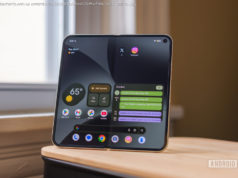Our look at every version of Android so far, and their key features.
2008, when pinch-to-zoom was a right reserved for iPhones and BlackBerrys were still the business, a new kind of smartphone hit the scene: the Android smartphone.
Starting at version 1.5 for public consumption, Android was launched on the HTC Dream (known as the T-Mobile G1 in the US), a QWERTY keyboard-packing slider phone. Based on a modified version of Linux, Android offered something very different to the iPhone: freedom.
An open source Cupcake
Unlike iOS’s heavily policed, locked-down operating system, Android arrived with the promise of open source everything. Google made access to the Android Market (now called the Google Play Store) freely available, and users could even customize their home screens with widgets, offering in-app functionality from said home screen, no app opening needed.
With Android 1.5, codenamed Cupcake, a new way was born.
Is it an albatross? Is it a jumbo jet? No! It’s the Dell Streak!
Version 1.6 of Android, Doughnut was announced in 2009, and it’s the update we have to blame for today’s giant phones that don’t quite fit in normal-sized pockets.
While Android tablets hadn’t quite taken off by this point, Donut was a step ahead, laying the foundations for the ‘phablet’, and introducing support for more screen sizes than Cupcake.
Big screens ahoy!
The aforementioned 5-inch Dell Streak, for example, despite being small by today’s standards, was a veritable beast when it was launched, and it owed its big screen to advances Donut introduced.
Other innovative features introduced in Android 1.6 included a text-to-speech engine, universal search and a more complete battery usage screen, so you knew which apps were draining your smartphone dry.
Who knew there was ever a time when you couldn’t have multiple Google accounts on your Android smartphone? We did!
Eclair, named for the choux pastry French patisserie staple, remedied account limitations and more.
Multi-touch me
But multiple accounts wasn’t the highlight feature of Android 2.0 – oh no. Eclair finally introduced multi-touch to smartphones that weren’t made by Apple (although that created something of a hoo-ha in itself.)
Take a picture, open it up, pinch to zoom… Android and iOS were in a two-horse race now, and Android was catching up.
Eclair also introduced Google Maps navigation, as well as additional camera modes, live wallpapers and Bluetooth 2.1 support.
Froyo, aka frozen yoghurt, is confectionary number four, and Android version 2.2. Loaded up on classic phones like the Samsung Galaxy S2 and the HTC Incredible S, it marked the point at which Android hardware started to feel more premium, finally doing justice to the OS inside – from Super AMOLED screens bettering the LCDs of iPhones through to excellent industrial design from the likes of HTC.
Get some Froyo on that hotspot
Version 2.2 also introduced a feature that could make Android phones more attractive than iPhones for the everyday user – Froyo’s most practical highlight was most definitely mobile Wi-Fi hotspotting.
While Windows phones had Bluetooth and USB hotspot tools before, the idea of using high-speed Wi-Fi tethering to share your phone’s (then blazingly fast) 3G data with a laptop or even another smartphone was vindication for Android fans the world over.
Apple would take a full year to get the feature onto iPhones, with many carriers still blocking iPhone tethering for some time to come.
Android Gingerbread didn’t get a new look or feel compared to Froyo, but it did get a host of new features, including support for new sensors, including NFC. Other highlights included internet calling and a new download manager – but none of those were our highlights.
Copy, paste, catch up with Apple
Oh no – our highlight was the seemingly rudimentary and long-overdue copy and paste feature that was giving iPhones the text-editing edge over Androids for over a year: single word selection.
Before Gingerbread, Android copying was clumsy, given the fact that only entire text boxes could be selected. 2010 saw Google closing the gap, with a long press over a word selecting just that word, and displaying a pop-up menu that included copy and paste options, just like we have on Android phones today.
Remember the Motorola Xoom? No, not the Microsoft Zune – we’re talking about the Motorola tablet that introduced Google’s tablet version of Android, codenamed Honeycomb.






